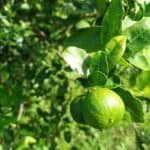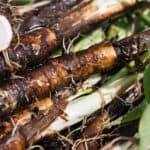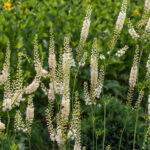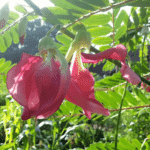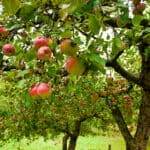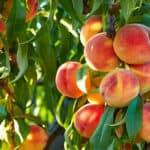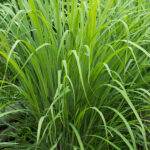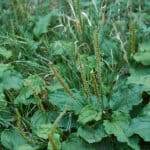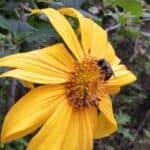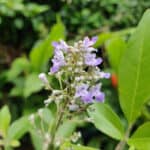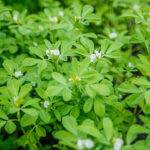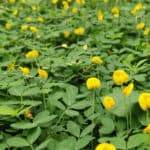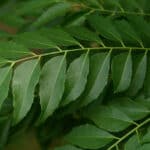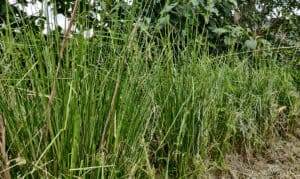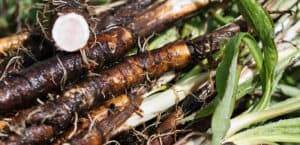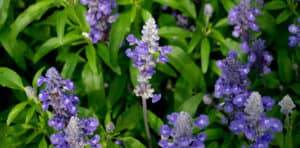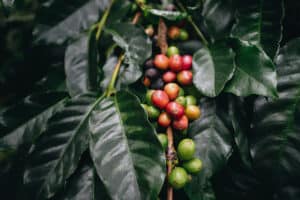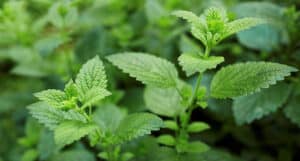Everything You Need To Know About The Canna Edulis Plant
Starting a functional permaculture food forest could be intimidating to some individuals. From choosing the right site to what types of plants you should aim for, it is important to understand that a food forest isn’t a one-size-fits-all process.
However, if you are looking for functional plants to help fulfill your dreams of having an edible garden, you can start with a super plant called achira. Continue reading and discover the magic behind this plant loved by ancient (and modern) cultures.
Achira Plant Overview
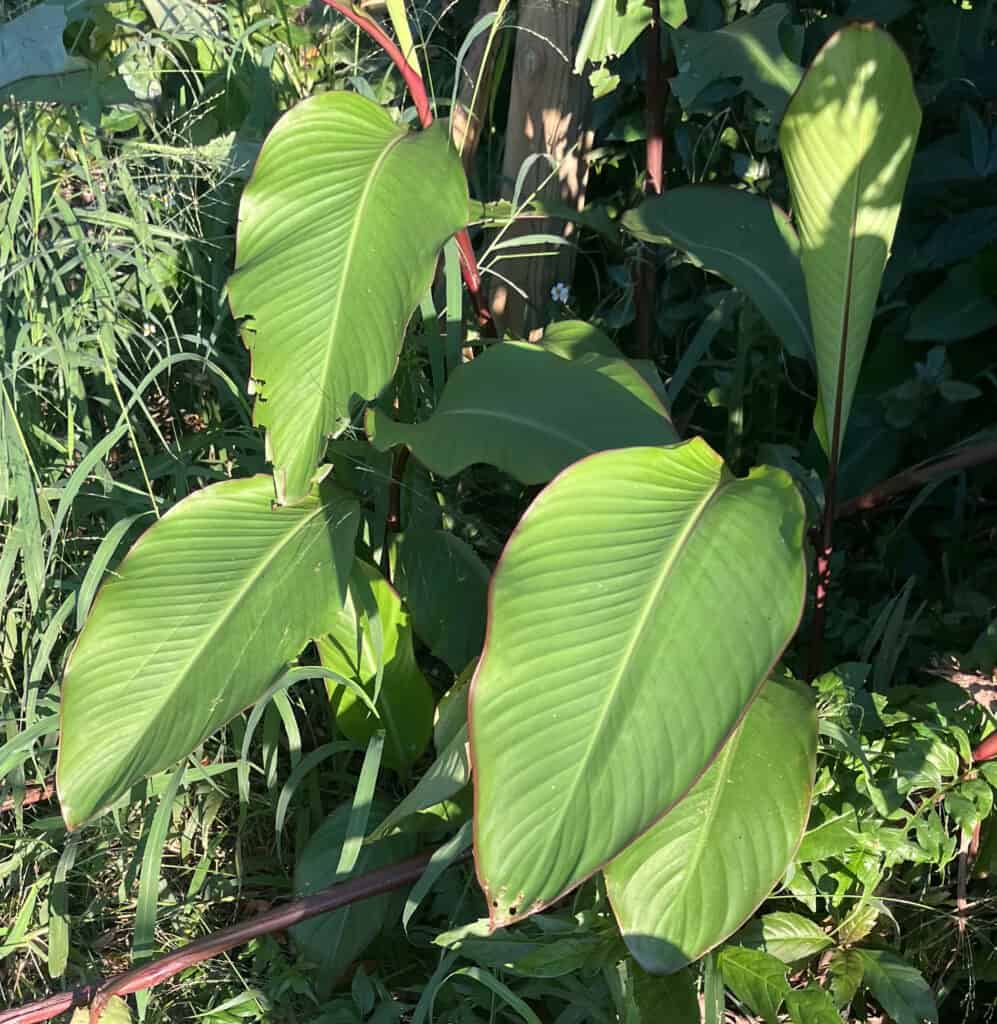
Achira, sometimes referred to as Indian shot or arrowroot, belongs to the Cannaceae family of plants, and its scientific name is Canna Edulis.
Canna Edulis is native to South America. This plant is crucial in that particular region as a wide range of cultures throughout South America have harvested the benefits of Achira for years.
Its cultivation can be found from Mexico to Brazil. Yet, this super plant isn’t a newcomer. On the contrary, it has been known in the Andes region for hundreds, if not thousands of years.
Arrowroot has been previously cultivated for its hardy and extensive edible rhizomes, even though nowadays, it is often consumed as processed flour.
As a perennial plant, Achira can grow up to nine feet tall and four feet in length. According to the United States Department of Agriculture (USDA), Achira’s hardiness zones range from 7 – 10. For instance, in Peru, it is often grown above 8,500 feet, making it a very hardy plant that can withstand varied climates.
Achira is not only an impressive plant due to its beautiful flowers, but it is also a plant that is relatively easy to grow. Arrowroot adds excellent value to a food forest as it produces edible rhizomes that can be consumed in many different ways.
Therefore, Achira is considered to be a basic starch crop, and its implementation amongst food forests could prove beneficial. Not only is this plant an excellent emergency food, especially when it comes to adding calories to a diet, but its rhizomes could also help stabilize the soil, thanks to its hardiness.
Nowadays, Achira is a stable crop in Asia, although it is gaining notoriety in the rest of the world too. Hence, why permaculturists are adding Achira to their food forests worldwide!
Interesting Facts About Achira
- Achira is a high-yielding and fairly adaptable plant.
- It is a hermaphrodite plant, meaning it produces both female and male organs, so it doesn’t need to be externally pollinated. However, bees, hummingbirds, and other pollinators love the nectar produced by this plant!
- Achira can be grown as a perennial and can withstand light freezes.
- Its roots can be white, green, yellow-green, or brown. Achira roots are similar to potatoes; however, their taste differs, mainly because Achira doesn’t have a strong flavor – it’s still tasty, though!
Propagation & Planting
Here’s everything you need to know before you plant Achira:
Soil Preferences
Achira can grow almost everywhere. This plant is so hardy it will tolerate sandy, loamy, or even heavy clay soil. As long as the soil drains well, you will be able to grow Achira.
However, it is fair to say that Achira can withstand even swampy soils. In fact, this plant is often used in banana circles that filter grey waters. Of course, this Achira shouldn’t be consumed as it’s more prone to disease, yet, it is highly valuable as it absorbs all the water alongside the bananas.
Propagation By Rhizomes
Even though this plant produces seeds, you’ll find that propagating Achira by rhizome will be easier and more straightforward.
It’s best to use the rhizome ends as this is the standard propagation practice. You should place them in moist soil, and you could directly sow them.
Alternatively, you could sow the rhizomes in a pot indoors until the plant reaches ten inches in height. Transplant the Achira plant in your desired location.
Propagation By Seeds
It is possible to plant Achira from seeds, although sometimes the new plant will not be true to its parent plant. Additionally, you will need to keep an eye on them as they could easily dry.
Achira seeds are often used by indigenous tribes and artisans to make jewelry, as these seeds will store for a very long time.
Climate
Achira needs plenty of sunlight to thrive; so, avoid planting it in shaded areas. Canna Edulis can tolerate high temperatures as it is often seen in the humid tropics and subtropical areas.
This plant can also tolerate freezing temperatures; however, if the low temperatures last for longer than a couple of days, the plant will likely die if the frosts persist.
What will happen is that the tops of the plants will be damaged and or kill, and the rhizome of the plant will survive.
Water Needs
Achira is a thirsty plant! Even though it can survive through long periods of drought, the rhizome will eventually become too fibrous to consume.
Thus, Canna Edulis will thrive in humid and wet parts of the world, as overwatering this plant is a difficult thing to do.
Pests
Slugs love achira and its rhizomes! You can often find them devouring the rhizomes that have been exposed or that are on the surface area of the soil.
Diseases
Even though Achira is a hardy plant, it could still suffer from diseases, namely Puccinia cannae. If you see the achira leaves with yellow, red, or even orange spots, then this could indicate that this disease is affecting the plant.
It is crucial for the leaves to be fully exposed to sunlight; if the leaves aren’t and they happen to be wet, or even damp, then fungal diseases could rapidly appear.
How to Plant Canna Edulis?
You could plant Achira around the borders of your vegetable garden or in areas where there’s full sun and you tend to avoid sowing more delicate flowers or plants.
Ideally, you would allow Canna Edulis’s rhizomes to expand by spacing them out at least one foot apart to have higher yields.
Alternatively, you could plant them more densely but risk having smaller rhizomes. In a multi-strata syntropic agriculture system, you could place Achira as a pioneer plant that will help you ‘break’ the soil to continue to plant. This way, you will mimic the structure that is often seen in nature and natural forests.
Additionally, you could chop and drop Achira leaves and use them as mulch for any other plants you may be growing underneath – just like how you would use bananas or Eucalyptus in a ‘chop and drop’ system.
Each Canna Edulis rhizome should be planted around 4 inches deep, once spring is around the corner.
Seeds, on the other hand, could take many weeks to break the hard coating they have; thus, it is advisable to germinate them indoors for at least eight to ten weeks before planting them outdoors.
Fertilizing Achira
It is possible to apply a high-nitrogen fertilizer to your Achira plant. However, only do so when you have transplanted the plant outdoors and if you think the growth has decreased or the plant is stunted. Make sure you use an organic fertilizer.
Harvesting Canna Edulis
Achira could be harvested throughout the year, especially if you live in a warm climate and have grown it from a rhizome.
However, if you live in a colder climate, you should wait at least eight months for the plant to produce a bigger, more nutrient-dense rhizome.
These are only guidelines for you to keep in mind. Just like with anything else in nature, you should observe your plants and where you live and see what works best for you.
I have left Achira on the ground for two years (and sometimes even longer than that), and I’m happy with the results I have seen after harvesting. Yet, I process and grind the Achira rhizomes and turn them into flour.
If you are unsure about what to do, why don’t you experiment a little bit? Plant two or more Achiras and see how it goes. I highly encourage you to become a scientist in your garden, so, don’t be afraid to experiment!
Storing Achira
The best place to keep your Achira rhizomes healthy is in the ground! Unlike any other root vegetable, this plant will quickly deteriorate if you harvest it and wait before consuming it. So, harvest as you need!
However, if your soil freezes, it would be a great idea to store the achira rhizomes in a cool place, if you are not ready to consume them. And when you are finally ready to experiment in the kitchen with your Canna Edulis you will simply need to cut the darkened areas of the rhizome.
Processing And Utilizing Canna Edulis
Did you know that the achira leaves are also often used as a wrap or plate for food, just like people often use the banana leaves? Here are other ways to use achira:
How to eat achira?
If you are looking for a high-dense calory substitute for potatoes, rutabaga, or turnips, then achira could be a good choice to consider.
I have never tried canning Achira, but I often use it as a tortilla wrap substitute. I also grind it for flour, and we often decorate our plates with its flowers and sometimes even eat them with salads!
Achira is widely used throughout South America, especially in the Andes region. It is often used by baking or boiling it, and even though it can be eaten raw, its lack of flavor makes it unappealing to people.
Not only will achira beautify any garden, but it also offers people the opportunity to harvest a rhizome filled with calories. Therefore, this crop is often considered to be an emergency crop in that particular region of the world.
The achira rhizome is very fibrous, hence why it needs to be thoroughly cooked.
How to process achira?
This is what I do every time I want to consume Achira:
- I harvest the rhizomes and thoroughly wash them.
- I sometimes peel them. However, if I don’t have much time, I will simply grate the rhizome.
- I usually place it all inside a bowl filled with water in order to avoid oxidation.
- I will then wash all the pulp again in order to remove part of the starch.
- I will strain all the Achira fibers, and then I will place the rest of the Achira on a tray for it to slightly dry.
- You could add an acidic dressing; I often add lemon, lime, or orange juice for the Achira not brown.
- I will let it dry for a couple of hours (it all depends on the climate). Alternatively, you could place it in the oven to completely dry. Then I will use a food processor to finely chop it until it reaches the desired consistency.
Frequently Asked Questions About Canna Edulis
Are Achira leaves edible?
Yes, Achira leaves are edible. If you are cooking a stir-fry, for example, you can add some chopped achira leaves to your meal. Alternatively, you could add them to your soups, stews, and even salads (albeit you could boil them first).
If you are following a recipe that asks you to add Kale or Spinach, then you can absolutely substitute those greens for achira leaves.
Longer achira leaves could also be used, but you will have to cook them for longer periods of time in order for them to become tender.
Are Canna Edulis Flowers Edible?
Yes, all Canna Edulis flowers are edible, and they are actually very tasty. However, keep in mind that the nectar on these flowers can feed many local birds in your area.
What are good companion plants for Achira?
I have often grown Achira alongside leafy greens such as kale, lettuce, Swiss Chard, and spinach. Achira is a great companion plant to herbs too, and it works perfectly well with herbs that do not require as much sun, such as parsley, and cilantro.
It would be best to avoid planting Canna Edulis alongside other large-rooted veggies, such as carrots, potatoes, or mandioc, mainly because the roots will compete against one another.
Can Achira Grow In A Container?
Yes, Achira can grow in a container, especially if you are only growing it for ornamental purposes. Albeit, it will need to be a large container in order for it to have enough space for its roots to form accordingly.
However, if you are growing Canna Edulis for food, you will need to plant it outdoors in order to eventually have a decent-sized yield that will allow you to consume the rhizomes.
Is Canna Edulis an invasive species?
It all depends on where you are and what your climate is like. However, in many regions, Achira is considered an invasive species, especially in the tropics where it will expand when it’s not properly managed.

